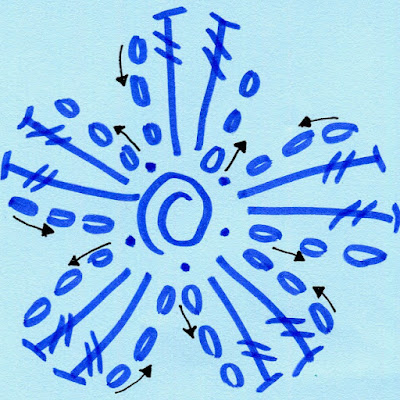How To Create A Mood Board For Your Next Crochet Project
Hello! Have you ever just stared at your yarn stash, overwhelmed by the possibilities, with no idea what to crochet next? I'm sure we've all been there! At times like these, a mood board can be exactly what you need to unlock creative inspiration and guide you towards your next project.
Think of a mood board as a visual roadmap for your crochet journey. It's a place to gather anything that sparks your imagination – colours, textures, patterns, even feelings! Here are my top tips for creating a crochet mood board.
First, find Your Colour Palette:
Inspiration Hunting: Flip through magazines, browse Pinterest (personally I LOVE Pinterest and use it for inspiration all the time!), or take a walk in nature. Ask yourself if you're drawn to the vibrant hues of a the sunset, or the calming blues and greens of a coastal landscape?
What to include: Pictures of fabrics, natural elements like wood grain or feathers, or even architectural details that inspire interesting stitch choices. You can add photos of geometric shapes, floral prints, or traditional motifs that could be incorporated into your crochet design.
The Emotional Factor: Cut out pictures or write down words that evoke the mood you want your project to have. Elegant, playful, cosy – the possibilities are endless and you get to choose!
Colour Harmony: Use online tools or colour theory basics to create a cohesive palette. Will you go for a bold contrast or a soothing monochrome look? If you're thinking "Woah! Colour theory? That's a bit of a stretch for me!", fear not - this is a topic I cover in my Colour & Crochet Course, which I'll explain more about below.
Putting it All Together:
There are no hard and fast rules! You can use a physical corkboard, a digital platform like Pinterest or Canva, or go old-school like me and use a sketchbook. The key is to arrange your finds in a way that excites you and helps your project vision come to life.
Yarn Matchmaker: Once you have your colour story, raid your yarn stash or visit your local yarn shop to find the perfect matches!
Conclusion: So, grab your scissors and glue or open your favourite digital platform, and get started on your mood board today! Let your creativity flow, and watch your next crochet project come to life, filled with your unique colour and personality.
Ready to Dive Deeper into the World of Colour & Crochet with me?
My Colour & Crochet Course will take you on a journey to develop your colour confidence and create stunning, well-co-ordinated crochet projects. It's an online course you can take at your own pace with a mix of colour theory lessons, fun exercises, and 4 free crochet patterns to get you started. You'll be able to wave goodbye to yarn-stash overwhelm and learn how to use inspiration to create amazing crochet projects which you will love.I'm offering you 15% off my Colour & Crochet Course! Simply add the word COURSE15 at the checkout for your discount to be applied.
I hope this has been a useful blog post for you. If you like these tips, please consider signing up to my mailing list, lots more good stuff coming your way. When you do so, you'll automatically be sent my PDF with 25 top tips that every crocheter should know!
Until next time, happy crocheting,
Marta xx




















